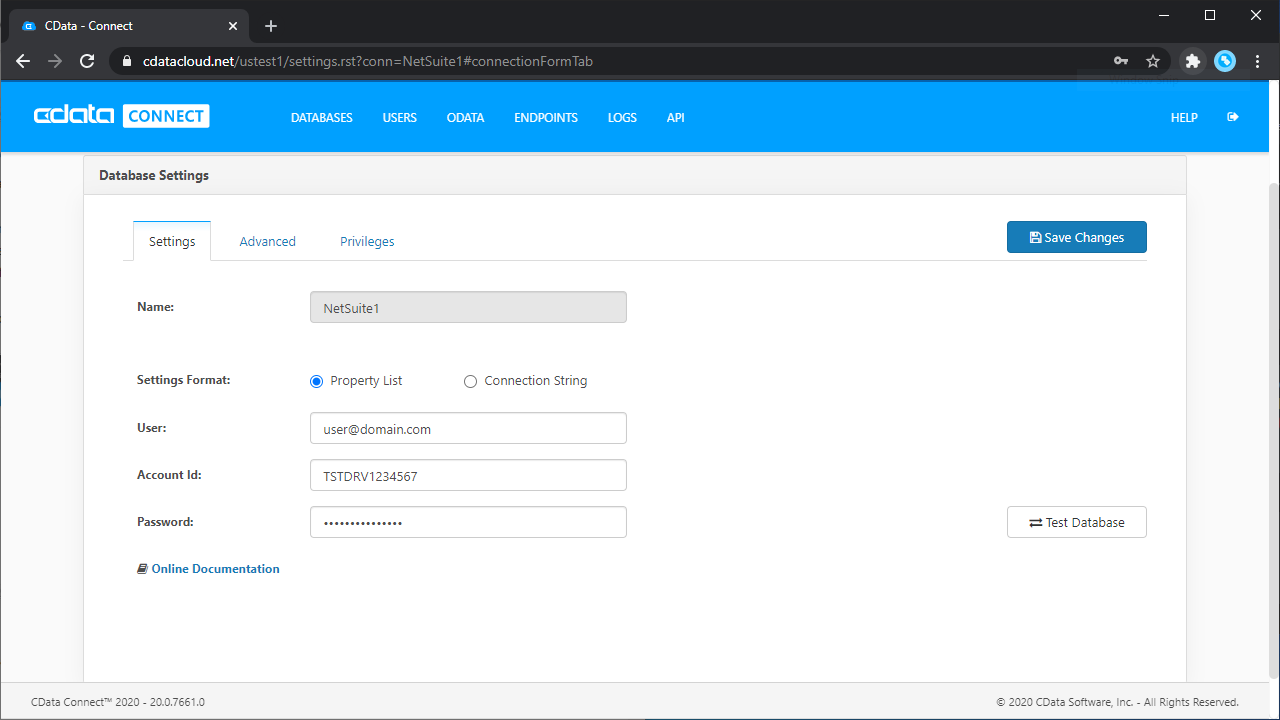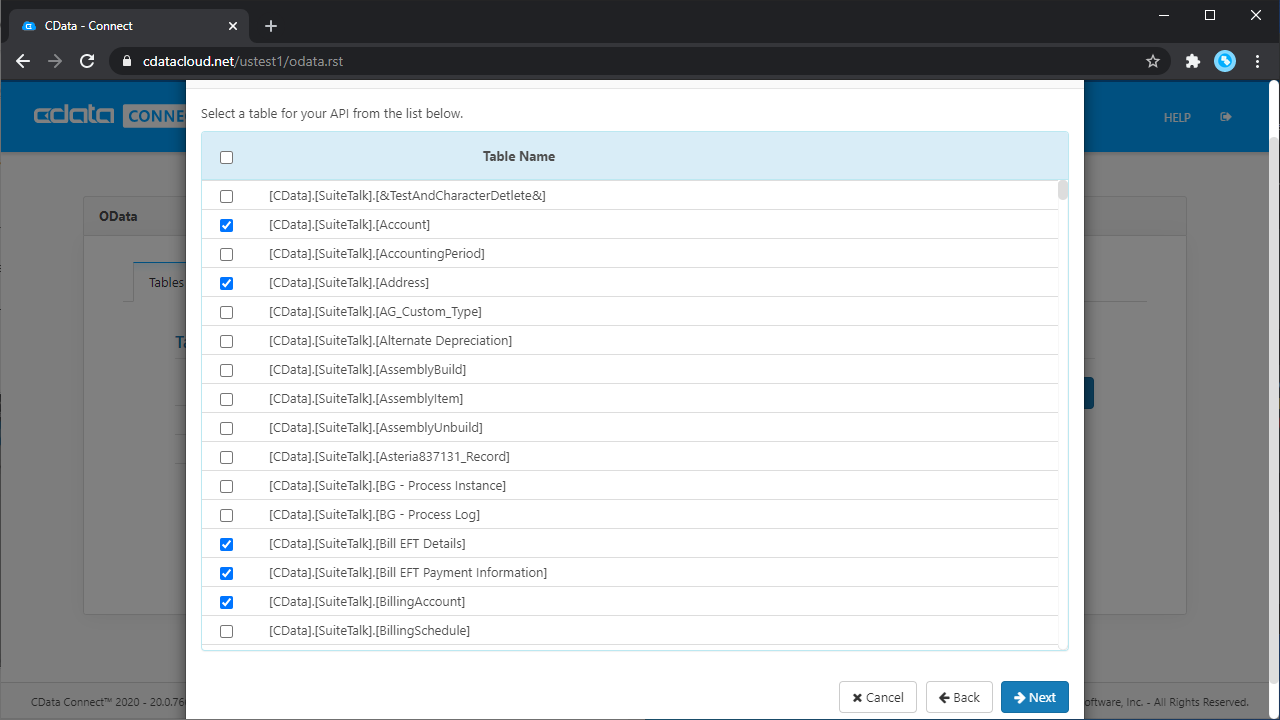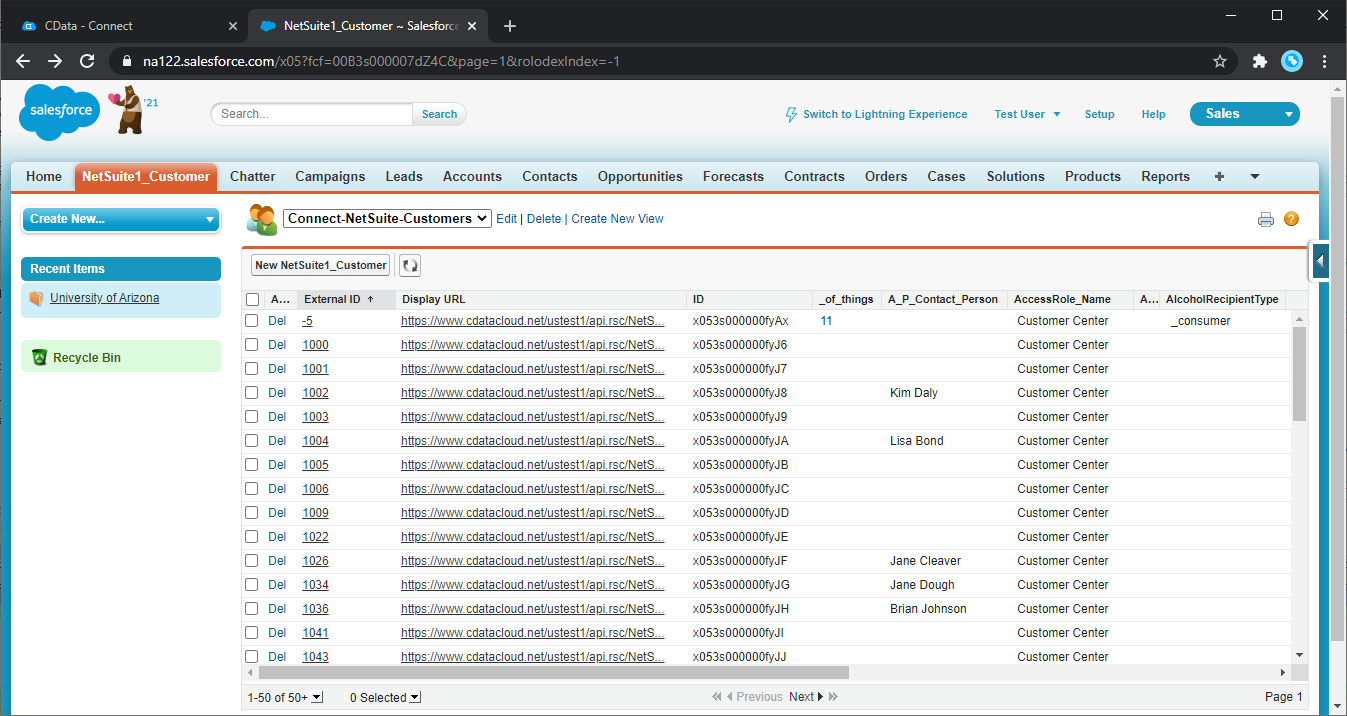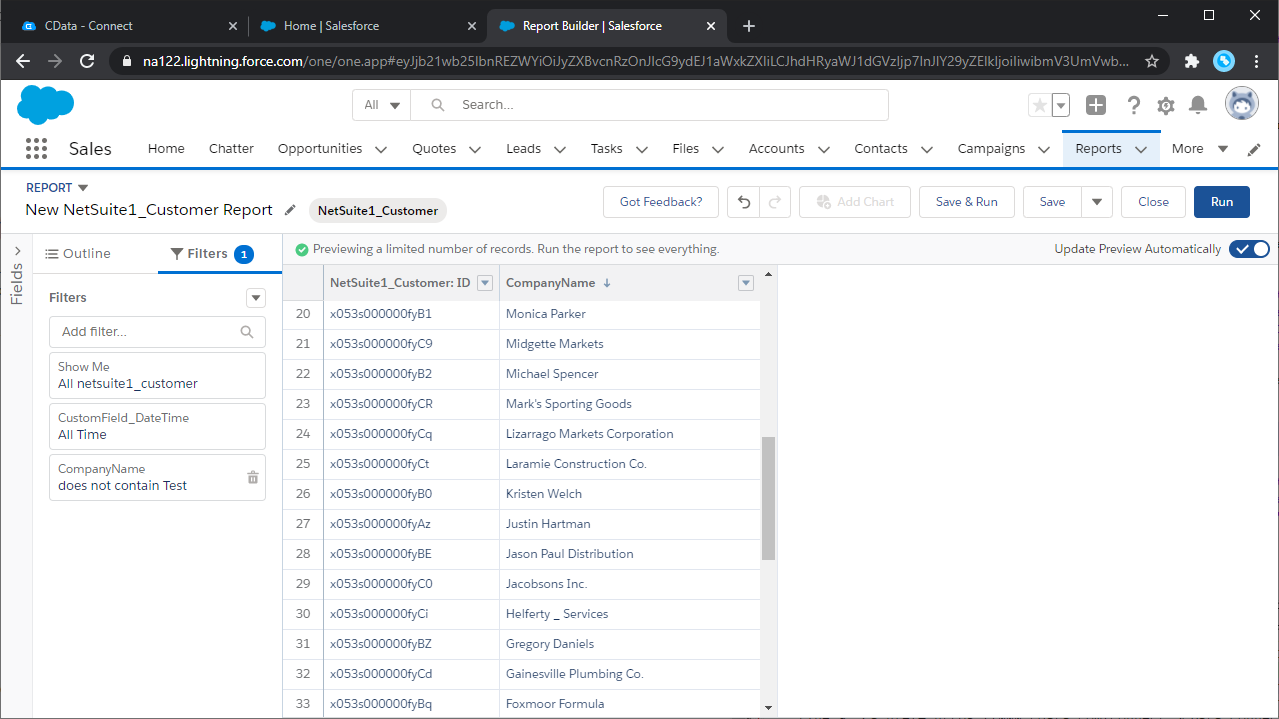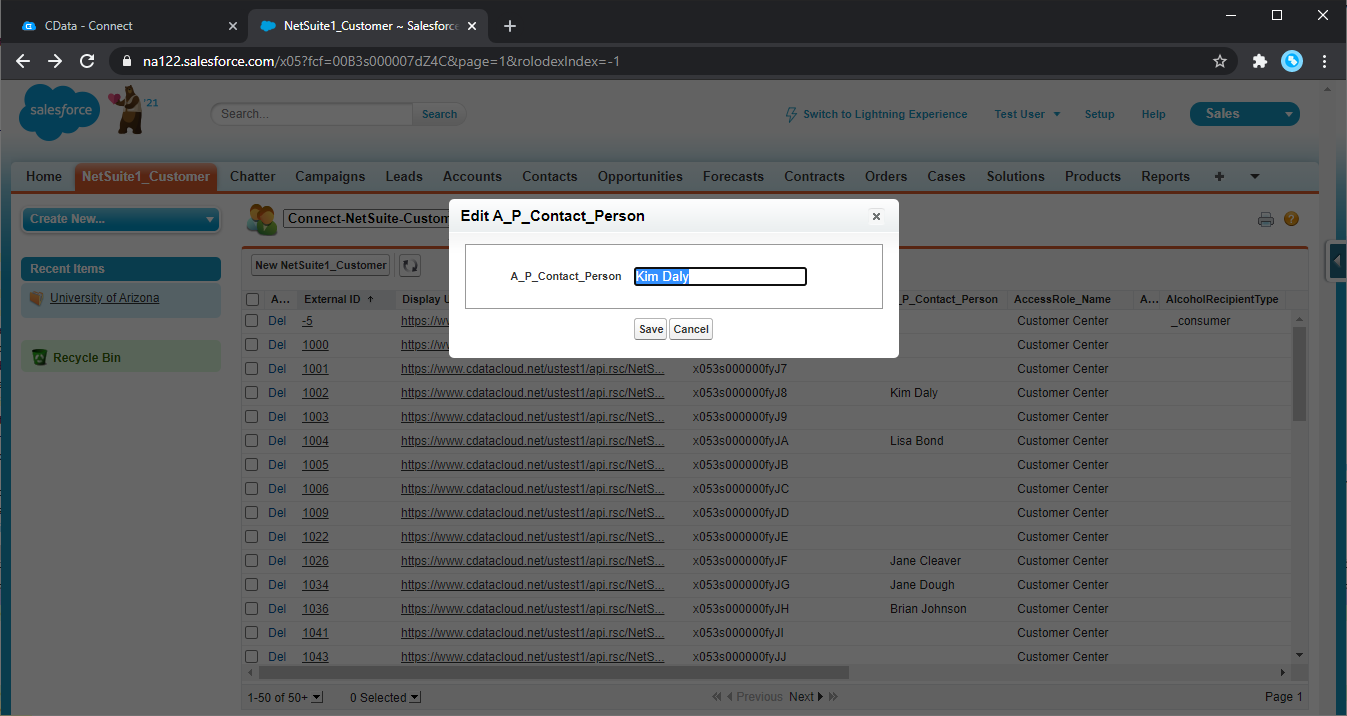Discover how a bimodal integration strategy can address the major data management challenges facing your organization today.
Get the Report →Edit and Search External JSON Objects in Salesforce Connect
Use CData Connect Server to securely provide OData feeds of JSON services to smart devices and cloud-based applications. Use the CData Connect and Salesforce Connect to create JSON objects that you can access from apps and the dashboard.
CData Connect Server, enables you to access JSON services from cloud-based applications like the Salesforce console and mobile applications like the Salesforce1 Mobile App. In this article, you will use CData Connect Server and Salesforce Connect to access external JSON objects alongside standard Salesforce objects.
Configuring Connect Server
To work with live JSON services in Salesforce Connect, we need to connect to JSON from Connect Server, provide user access to the new virtual database, and create OData endpoints for the JSON services.
Add a Connect Server User
Create a User to connect to JSON from Reveal through Connect Server.
- Click Users -> Add
- Configure a User
![Creating a new user]()
- Click Save Changes and make note of the Authtoken for the new user
![Connect Server users]()
Connect to JSON from Connect Server
CData Connect Server uses a straightforward, point-and-click interface to connect to data sources and generate APIs.
- Open Connect Server and click Connections
![Adding a connection]()
- Select "JSON" from Available Data Sources
- Enter the necessary authentication properties to connect to JSON.
See the Getting Started chapter in the data provider documentation to authenticate to your data source: The data provider models JSON APIs as bidirectional database tables and JSON files as read-only views (local files, files stored on popular cloud services, and FTP servers). The major authentication schemes are supported, including HTTP Basic, Digest, NTLM, OAuth, and FTP. See the Getting Started chapter in the data provider documentation for authentication guides.
After setting the URI and providing any authentication values, set DataModel to more closely match the data representation to the structure of your data.
The DataModel property is the controlling property over how your data is represented into tables and toggles the following basic configurations.
- Document (default): Model a top-level, document view of your JSON data. The data provider returns nested elements as aggregates of data.
- FlattenedDocuments: Implicitly join nested documents and their parents into a single table.
- Relational: Return individual, related tables from hierarchical data. The tables contain a primary key and a foreign key that links to the parent document.
See the Modeling JSON Data chapter for more information on configuring the relational representation. You will also find the sample data used in the following examples. The data includes entries for people, the cars they own, and various maintenance services performed on those cars.
![Configuring a connection (NetSuite is shown).]()
- Click Save Changes
- Click Privileges -> Add and add the new user (or an existing user) with the appropriate permissions (SELECT is all that is required for Reveal).
Add JSON OData Endpoints in Connect Server
After connecting to JSON, create OData Endpoints for the desired table(s).
- Click OData -> Tables -> Add Tables
- Select the JSON database
- Select the table(s) you wish to work with and click Next
![Selecting a Table (NetSuite is shown)]()
- (Optional) Edit the table definition to select specific fields and more
- Save the settings
(Optional) Configure Cross-Origin Resource Sharing (CORS)
When accessing and connecting to multiple different domains, there is a possibility of violating the limitations of cross-site scripting. In that case, configure the CORS settings in OData -> Settings.
- Enable cross-origin resource sharing (CORS): ON
- Allow all domains without '*': ON
- Access-Control-Allow-Methods: GET, PUT, POST, OPTIONS
- Access-Control-Allow-Headers: Authorization
Save the changes to the settings.

Connect to JSON Services as an External Data Source
Follow the steps below to connect to the feed produced by the API Server.
- Log into Salesforce and click Setup -> Integrations -> External Data Sources.
- Click New External Data Source.
- Enter values for the following properties:
- External Data Source: Enter a label to be used in list views and reports.
- Name: Enter a unique identifier.
- Type: Select the option "Salesforce Connect: OData 4.0".
URL: Enter the URL to the OData endpoint of the API Server. The format of the OData URL is CONNECT_SERVER_URL/api.rsc/
- Select the Writable External Objects option.
Select JSON in the Format menu.
- In the Authentication section, set the following properties:
- Identity Type: If all members of your organization will use the same credentials to access the API Server, select "Named Principal". If the members of your organization will connect with their own credentials, select "Per User".
- Authentication Protocol: Select Password Authentication to use basic authentication.
- Certificate: Enter or browse to the certificate to be used to encrypt and authenticate communications from Salesforce to your server.
- Username: Enter the username for a user known to CData Connect Server.
- Password: Enter the user's authtoken.
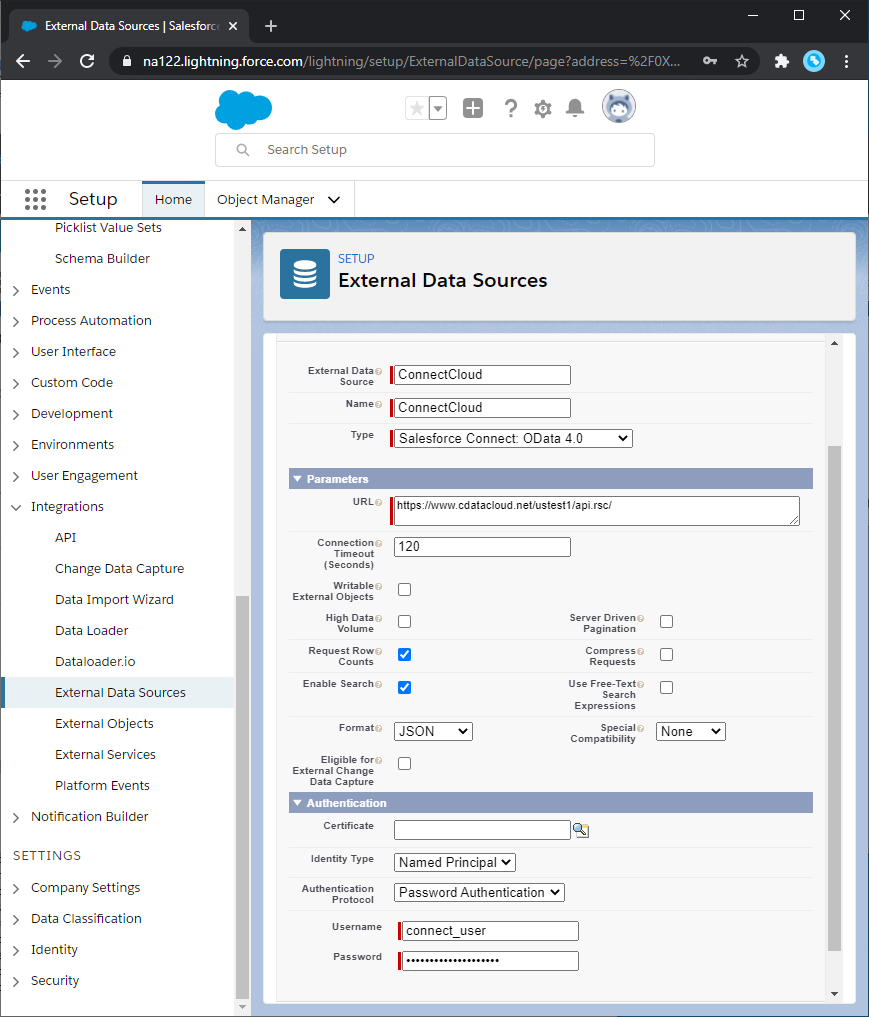
Synchronize JSON Objects
After you have created the external data source, follow the steps below to create JSON external objects that reflect any changes in the data source. You will synchronize the definitions for the JSON external objects with the definitions for JSON tables.
- Click the link for the external data source you created.
- Click Validate and Sync.
- Select the JSON tables you want to work with as external objects.
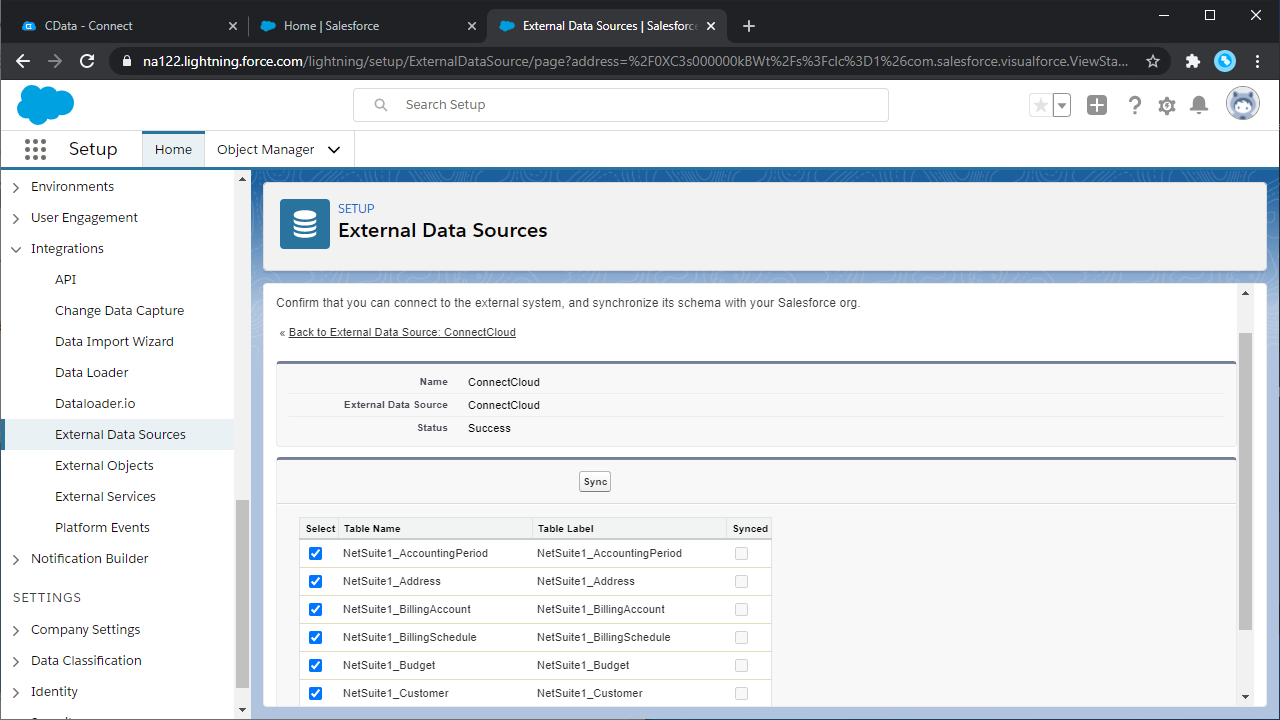
Access JSON Services as Salesforce Objects
After adding JSON services as an external data source and syncing JSON tables as external objects, you can use the external JSON objects just as you would standard Salesforce objects.
-
Create a new tab with a filter list view:
![Viewing external objects from Salesforce (NetSuite is shown)]()
-
Create reports of external objects:
![Reporting on external objects from Salesforce (NetSuite is shown)]()
-
Create, update, and delete JSON objects from the Salesforce dashboard:
![Editing external objects from Salesforce (NetSuite is shown)]()
Simplified Access to JSON Services from Applications
At this point, you have a direct connection to live JSON services from Salesforce. For more information on gaining simplified access to data from more than 100 SaaS, Big Data, and NoSQL sources in applications like Salesforce, refer to our Connect Server page.









